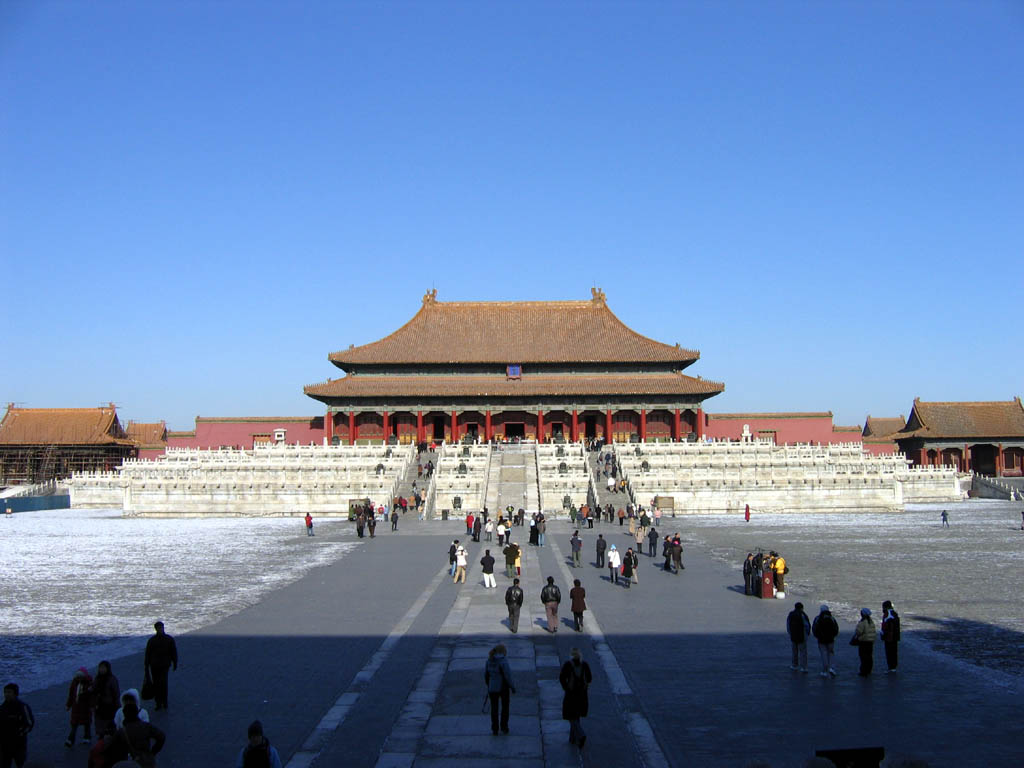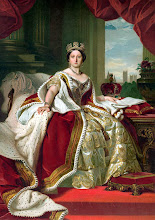The Forbidden City was the Chinese imperial palace from the mid-Ming Dynasty to the end of the Qing Dynasty. It is located in the middle of Beijing, China and now houses the Palace Museum. For almost five centuries, it served as the home of the Emperor and his household, and the ceremonial and political centre of Chinese government.
Built from 1406 to 1420, the complex consists of 980 surviving buildings with 8,707 bays of rooms[1][2] and has influenced cultural and architectural developments in East Asia and elsewhere. The Forbidden City was declared a World Heritage Site in 1987,[2] and is listed by UNESCO as the largest collection of preserved ancient wooden structures in the world. and covers 720,000 square metres. The palace complex exemplifies traditional Chinese palatial architecture,
Since 1924, the Forbidden City has been under the charge of the Palace Museum, whose extensive collection of artwork and artefacts were built upon the imperial collections of the Ming and Qing dynasties. Part of the museum's former collection is now located in the National Palace Museum in Taipei. Both museums descend from the same institution, but were split after the Chinese Civil WarName
The common English name, "the Forbidden City," is a translation of the Chinese name Zijin Cheng (Chinese: 紫禁城; pinyin: Zǐjinchéng; literally "Purple Forbidden City"). Another English name of similar origin is "Forbidden Palace". In the Manchu language it is called Dabkūri dorgi hoton (Manchu: ![]() ), which literally means the "Layered Inner City."
), which literally means the "Layered Inner City."
The name "Zijin Cheng" is a name imbued with significance on many levels. Zi, or "Purple", refers to the North Star, which in ancient China was called the Ziwei Star, and in traditional Chinese astrologyCelestial Emperor. The surrounding celestial region, the Ziwei EnclosureChinese: 紫微垣; pinyin: Zǐwēiyuán), was the realm of the Celestial Emperor and his family. The Forbidden City, as the residence of the terrestrial emperor, was its earthly counterpart. Jin, or "Forbidden", referred to the fact that no-one could enter or leave the palace without the emperor's permission. Cheng means a walled city. was the abode of the (
Today, the site is most commonly known in Chinese as Gugong (故宫), which means the "Former Palace." The museum which is based in these buildings is known as the "Palace Museum" (Chinese: 故宫博物院; pinyin: Gùgōng Bówùyùan)History
The site of the Forbidden City was part of the Imperial city during the Mongol Yuan Dynasty. Upon the establishment of the Ming Dynasty, the Hongwu Emperor moved the capital from Beijing in the north to Nanjing in the south, and ordered that the Mongol palaces be razed. When his son Zhu Di became the Yongle Emperor, he moved the capital to Beijing, and construction began in 1406 of what would become the Forbidden City. Construction lasted 15 years, and required more than a million workers.Material used include whole logs of precious Phoebe zhennan wood (Chinese: 楠木; pinyin: nánmù) found in the jungles of south-western China, and large blocks of marble from quarries near Beijing. The floors of major halls were paved with "golden bricks" (Chinese: 金砖; pinyin: jīnzhuān), specially baked paving bricks from Suzhou. From 1420 to 1644, the Forbidden City was the seat of the Ming Dynasty. In April 1644, it was captured by rebel forces led by Li Zicheng, who proclaimed himself emperor of the Shun Dynasty. He soon fled before the combined armies of former Ming general Wu Sangui and Manchu forces, setting fire to parts of the Forbidden City in the process.By October, the Manchus had achieved supremacy in northern China, and a ceremony was held at the Forbidden City to proclaim the young Shunzhi Emperor as ruler of all China under the Qing Dynasty. The Qing rulers changed the names of the principal buildings, to emphasise "Harmony" rather than "Supremacy",made the name plates bilingual (Chinese and Manchu), and introduced Shamanist elements to the palace. In 1860, during the Second Opium War, Anglo-French forces took control of the Forbidden City and occupied it until the end of the war. In 1900 Empress Dowager Cixi fled from the Forbidden City during the Boxer Rebellion, leaving it to be occupied by forces of the treaty powers until the following year. In 1912, Puyi, the last Emperor of China, abdicated. Puyi sold many treasures to finance his expensive lifestyle, while others were stolen by palace eunuchs. Under an agreement with the new Republic of China government, Puyi remained in the Inner Court, while the Outer Court was given over to public use,until he was evicted after a coup in 1924.The Palace Museum was then established in the Forbidden City. In 1933, the Japanese invasion of China forced the evacuation of the national treasures in the Forbidden City. Part of the collection was returned at the end of World War II, but the other part was evacuated to Taiwan in 1947 under orders by Chiang Kai-shek, whose Kuomintang was losing the Chinese Civil War. This relatively small but high quality collection was kept in storage for many years since the KMT still hoped to return to the mainland. Finally, in 1965, they again became public, at the core of the National Palace Museum in Taipei.
After the establishment of the People's Republic of China in 1949, some damage was done to the Forbidden City as the country was swept up in revolutionary zeal. During the Cultural Revolution, however, further destruction was prevented when Premier Zhou Enlai sent an army battalion to guard the city.The Forbidden City was declared a World Heritage Site in 1987 by UNESCO as the "Imperial Palace of the Ming and Qing Dynasties",due to its significant place in the development of Chinese architecture and culture. It is currently administered by the Palace Museum, which is currently carrying out a sixteen-year restoration project to repair and restore all buildings in the Forbidden City to their pre-1912 state.In recent years, the presence of commercial enterprises in the Forbidden City has become controversial. A Starbucks store, which opened in 2000,sparked objections and eventually closed on July 13, 2007. Chinese media also took notice of a pair of souvenir shops that refused to admit Chinese citizens in order to price-gouge foreign customers in 2006.
Religion
Religion was an important part of life for the imperial court. In the Qing Dynasty, the Palace of Earthly Harmony became a place of Manchu Shamanist ceremony. At the same time, the native Chinese Taoist religion continued to have an important role throughout the Ming and Qing dynasties. There were two Taoist shrines, one in the imperial garden and another in the central area of the Inner Court.
A prevalent form of religion in the Qing Dynasty palace was Tibetan Buddhism, or Lamaism. A number of temples and shrines were scattered throughout the Inner Court. Buddhist iconography also proliferated in the interior decorations of many buildings. Of these, the Pavilion of the Rain of Flowers is one of the most important. It housed a large number of Buddhist statues, icons, and mandalas, placed in ritualistic arrangements.












No comments:
Post a Comment